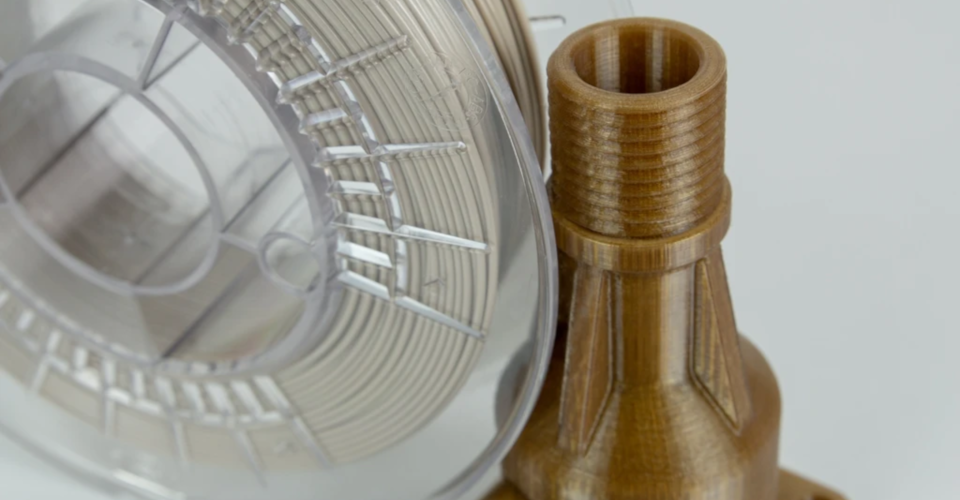The Best 3D Printing Filaments for Heat Resistant Parts
We’re very spoiled for choices nowadays when it comes to 3D printing filaments. We have gone way past the standard ABS, PLA, and PETG filaments and can now print with materials that are rubber-like, look similar to metal, or glow in the dark.
In terms of physical characteristics, heat stability is one of the most sought after for 3D printing materials. However, it’s also quite elusive as it commonly comes with some unique challenges for the 3D printing process. Are you designing a part that needs to withstand extreme temperatures? Here are some heat-resistant 3D printing filaments to consider.
Limitations of high-temperature filaments
3D printing has always been considered a technology that could potentially replace more traditional manufacturing methods. However, this potential can never be fully realized until 3D printing materials can mimic the properties of materials like steel or wood.
Some filament manufacturers have been making some headway into designing filaments more appropriate for high-heat applications. There are some issues you may have to anticipate when working with these filaments, though.
May require high-end equipment
In some cases, using a heat-stable 3D printing filament will require a melt zone to reach temperatures of up to 400 C. Simply put, not all 3D printers are designed to handle this kind of temperature. Aside from designing the heating element to reach very high temperatures, all other components and electronics must have some level of resilience against extreme heat.
If you’re keen on working with high-performance filaments, you likely will have to invest in a high-end 3D printer as well. However, there are more accessible options that common 3D printers can handle, such as ABS or PETG.
Consumes a lot of energy
When printing with heat-stable filaments, you will need to heat up both the melt zone and the print bed to very high temperatures. This will, of course, require a lot more energy than usual. If you’re 3D printing at high temperatures all the time out of your workshop at home, then you can expect your power bills to go much higher. The difference would be even more pronounced in industrial settings.
Prone to warping
Warping happens as a result of the shrinkage of the filament material as it cools down. This problem becomes more pronounced when using high-temperature filaments simply because of how rapidly the material cools as soon as it exits the nozzle.
To be clear, some high-temperature filaments are more prone to warping than others. However, some measures to address warping would almost certainly be necessary.
Best filaments for 3D printing high-resistant parts
If you want a good level of heat stability for your 3D printed project, you don’t necessarily need to go for an uncommon, high-performance filament. We’re starting off this list with the more common options before advancing to those that are a little less common.
ABS
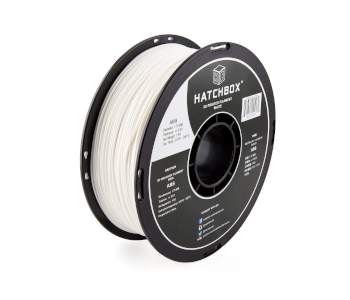
ABS (Acetonitrile Butadiene Styrene) likely needs no introduction – it’s already one of the more common 3D printing filaments. It’s also quite cheap, which makes it the first filament that most people use when printing at high temperatures for the first time. Depending on the brand, the optimal printing temperature for ABS is likely somewhere in the range of 21o to 240 C
ABS has earned quite a reputation for being very difficult to deal with. ABS has poor bed adhesion and is highly prone to warping. It’s Working with ABS has proven to be very good practice for people who have not dealt with extreme warping problems before.
ABS has a glass transition temperature of 105 C. This makes ABS ideal for outdoor applications, as even the hottest day would not get enough for it to deform.
PETG
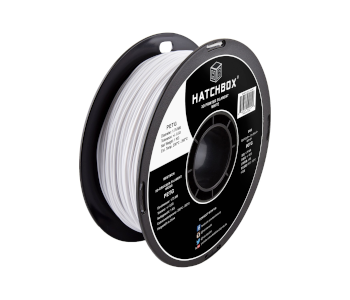
Glycol-enhanced PET is often described as a combination of the best parts of both PLA and ABS. It’s fairly easy to work with, does not emit unpleasant fumes during printing, is chemically resistant, and has relatively good heat stability.
PETG is a good option if you find yourself getting frustrated with the behavior of filaments like ABS or Nylon. Unlike most high-temperature filaments, PETG is not prone to warping. It also exhibits bed adhesion so well that you may want to use an adhesive that you can remove easily.
In terms of heat stability, PETG is about a notch or two lower than ABS. PETG prints somewhere between 220 to 250 C. Although those temperatures are similar to ABS, the glass transition temperature of PETG is a lot lower – about 80 C. This should be heat-stable enough for most applications but is not quite as impressive as ABS.
Nylon
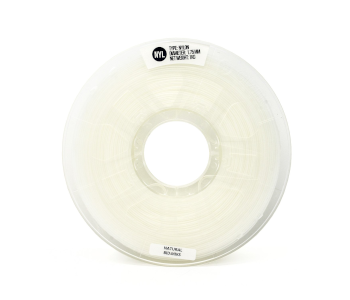
Nylon (or more generally, polyamides) is a material more known for its mechanical strength than its chemical stability. Nylon is tough enough to make it to high-reliability applications such as military uniforms, sporting goods, camping tents, and parachutes.
Nylon filament prints at a range of 260 to 280 C. This makes it a bit more power-intensive as a 3D printing material than ABS. However, the glass transition temperature of Nylon is a paltry 70 °C. This makes Nylon just a bit more heat-stable than PLA.
Since Nylon prints at high temperatures, it still runs into the same warping and bed adhesion issues. This makes Nylon a poor choice for beginners, as well as for models that call for intricate details.
Although Nylon does not excel in terms of heat stability, its mechanical strength and durability cannot be questioned. If you want your print to be tough, then printing with Nylon is still worth the trouble. Just don’t leave it inside your car on a hot day if you don’t want it to be a deformed mess.
Amphora
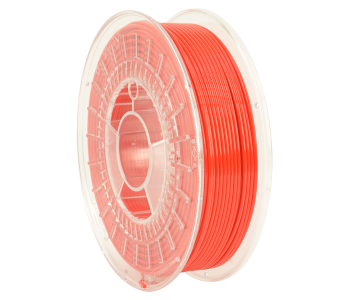
Amphora is a custom polymer made by the Eastman Chemical Company. It was designed to deliver just about all the characteristics that the 3D printing profession was looking for. Not only is Amphora heat-stable, but it is also mechanically strong, flexible, chemically resistant, and comes out with a smooth finish.
Amphora prints at a range of 240 to 260 C. It has a glass transition temperature of 100 C. At these values, the heat stability of Amphora is comparable to that of ABS. However, Amphora holds the advantage in a lot of other aspects.
Unlike ABS, Amphora is not heavily prone to warping and does not emit unpleasant fumes during printing. It’s also more flexible and has better impact resistance. If you’re 3D printing a heavily detailed model, then the dimensional stability of Amphora would be a huge advantage.
Given how good the filament is, why is Amphora not more famous? The simple answer is that it’s expensive. Amphora is considered a specialty filament and one that most users would not even consider buying. However, it’s an excellent professional-grade level that delivers good results without being difficult to use.
PEEK

PEEK (Polyether Ketone) is another material that is considered a specialty 3D printing filament. PEEK is very expensive and is far from common. It’s also one of the best options for creating heat-stable 3D printed objects.
PEEK prints at temperatures ranging from 360 to 400 C. Its glass transition temperature is approximately 145 C. From those numbers alone, it’s already apparent that PEEK is not the kind of material you mess around with. You’ll need to use a high-performance 3D printer and be very careful about your printer’s settings.
Unfortunately, PEEK does not offer any ease-of-use benefits. It’s also prone to warping, further compounded by the fact that it needs to cool down from a very high temperature. You’ll need to print PEEK very slowly on a heated print bed and a layer of adhesive.
PEEK has superior mechanical and chemical properties almost all across the board, but it’s also one of the most finicky materials for 3D printing. This isn’t something we can recommend to people who 3D print for a hobby.
Final thoughts
Heat-stable filaments may just be the next major frontier for 3D printing technology. If heat-stable 3D printed projects become more common, we may just see them making their way into more and more industrial applications.
If you’re interested in dipping your toes into the world of high-temperature 3D printing, then the filaments we have listed have been helpfully arranged in terms of how common they are. ABS, despite being popular, is actually one of the more problematic filaments to deal with. That does seem par for the course for high-temperature filaments, unfortunately. If you can handle ABS, how does buying a spool of Amphora filament sound?

